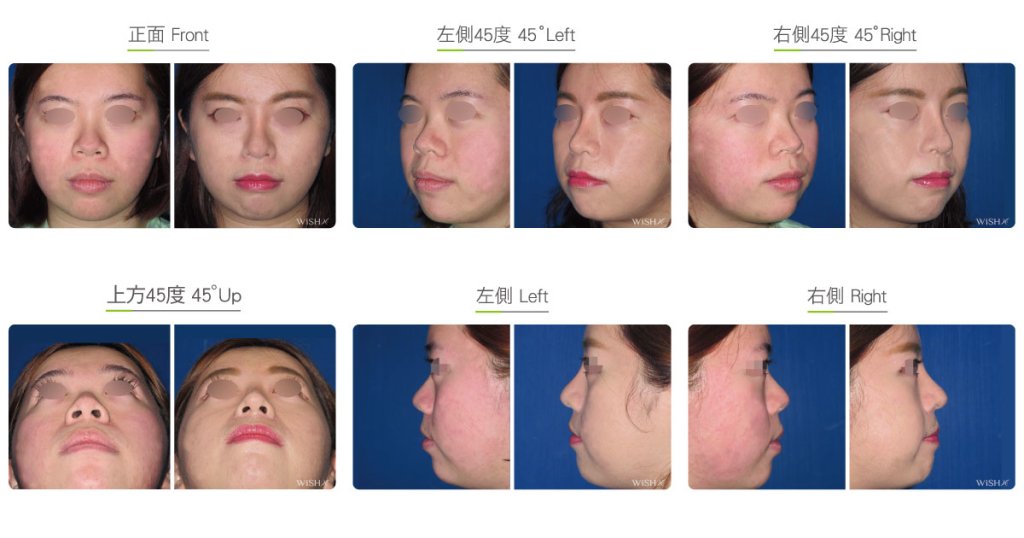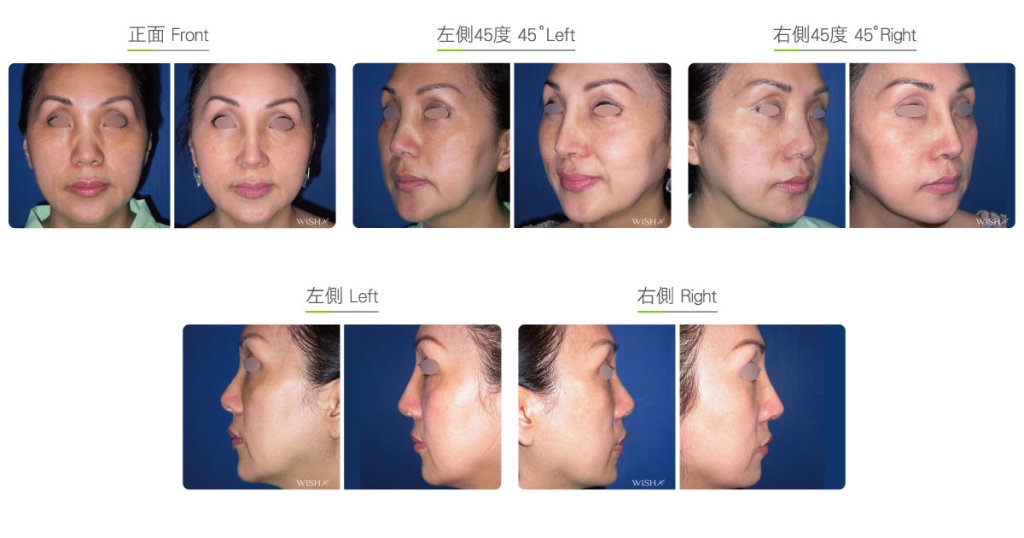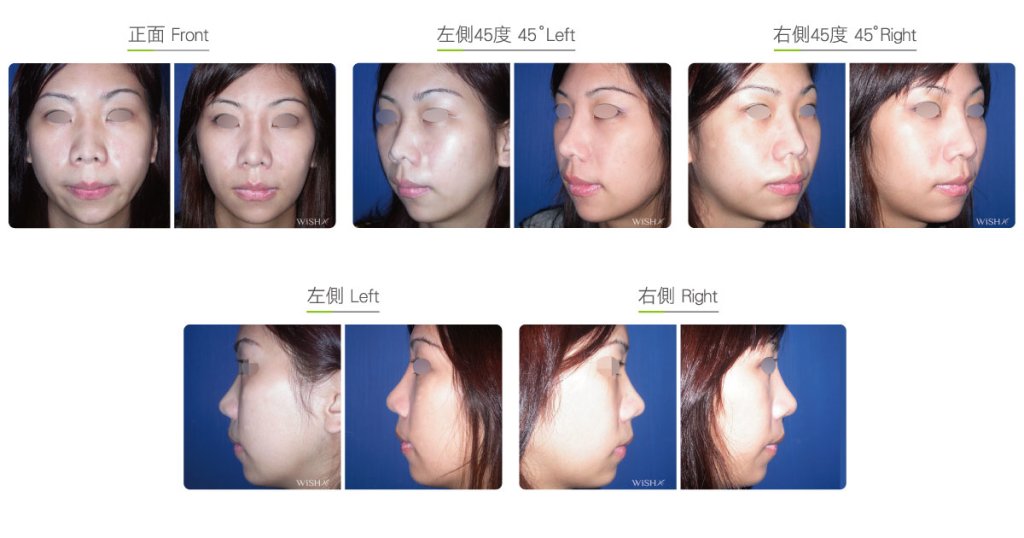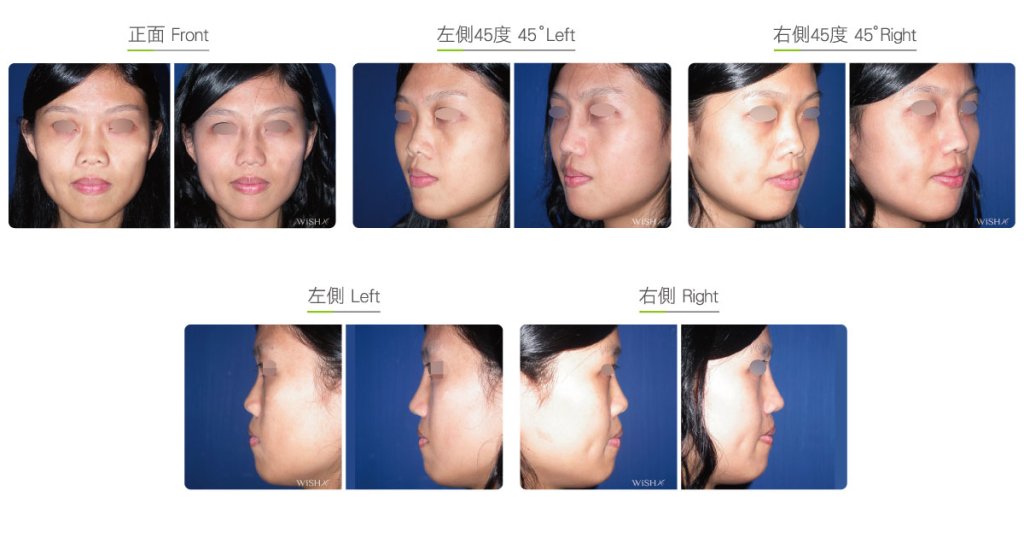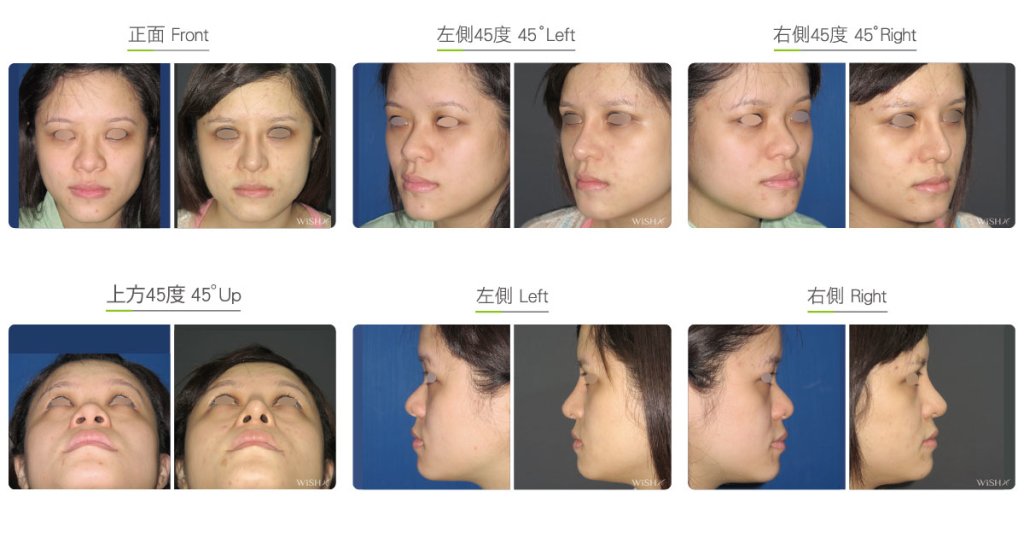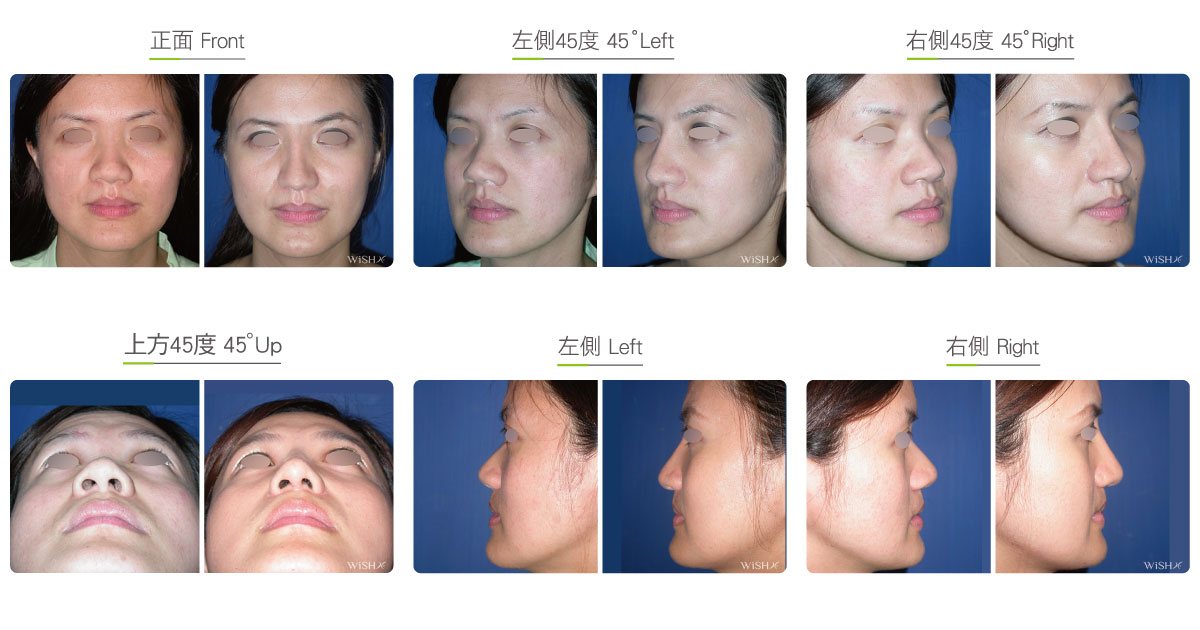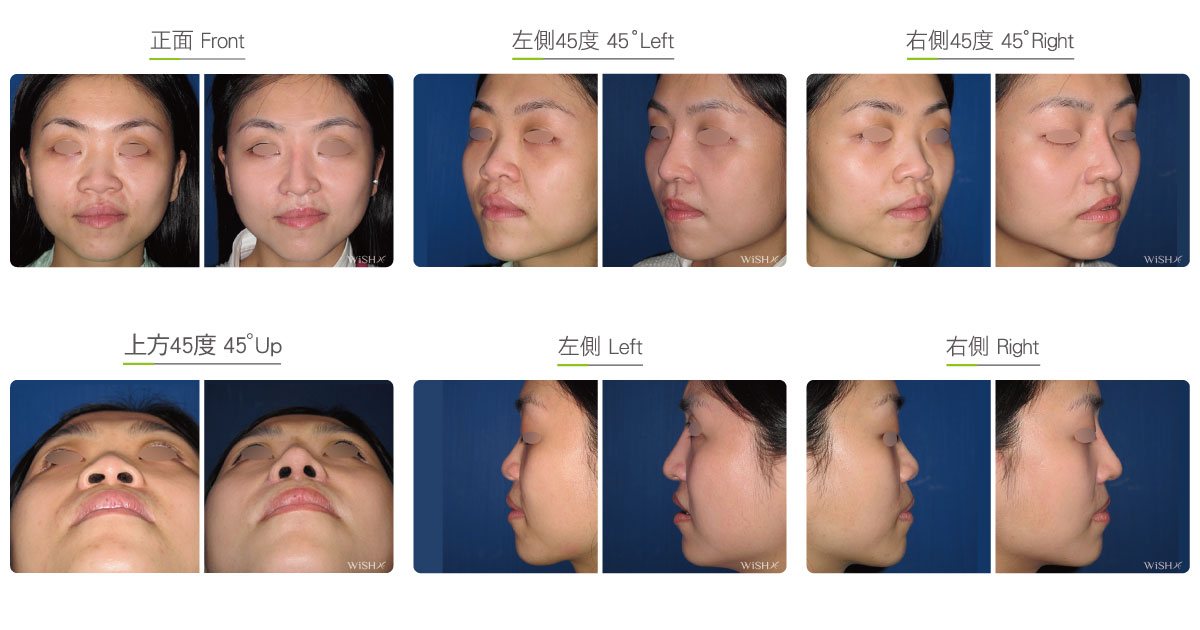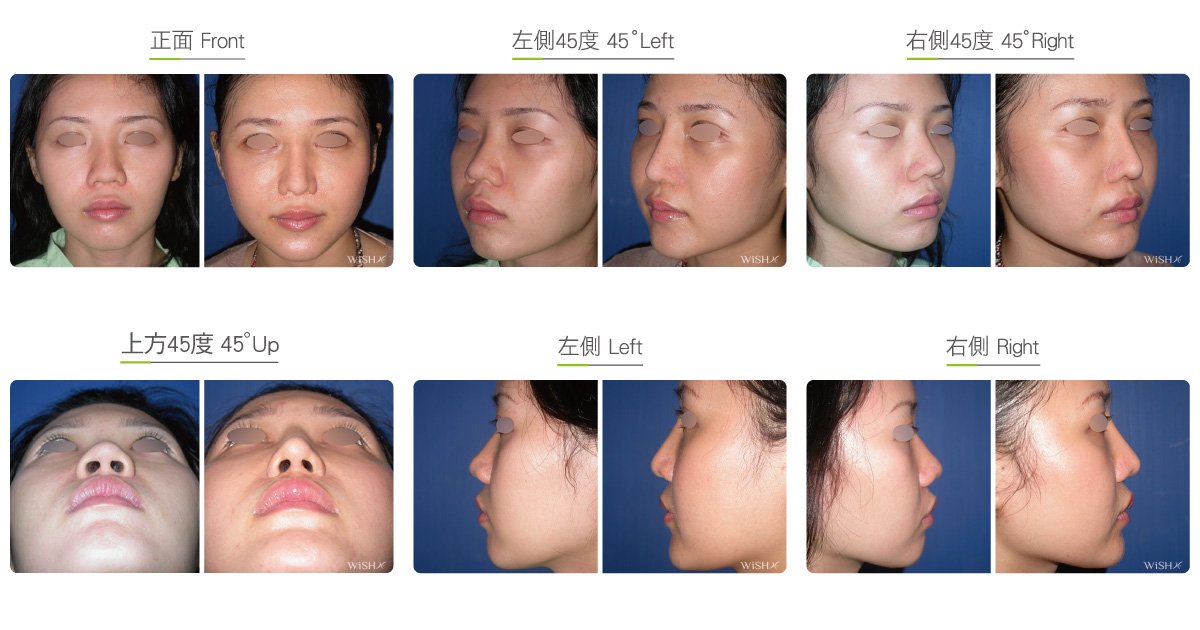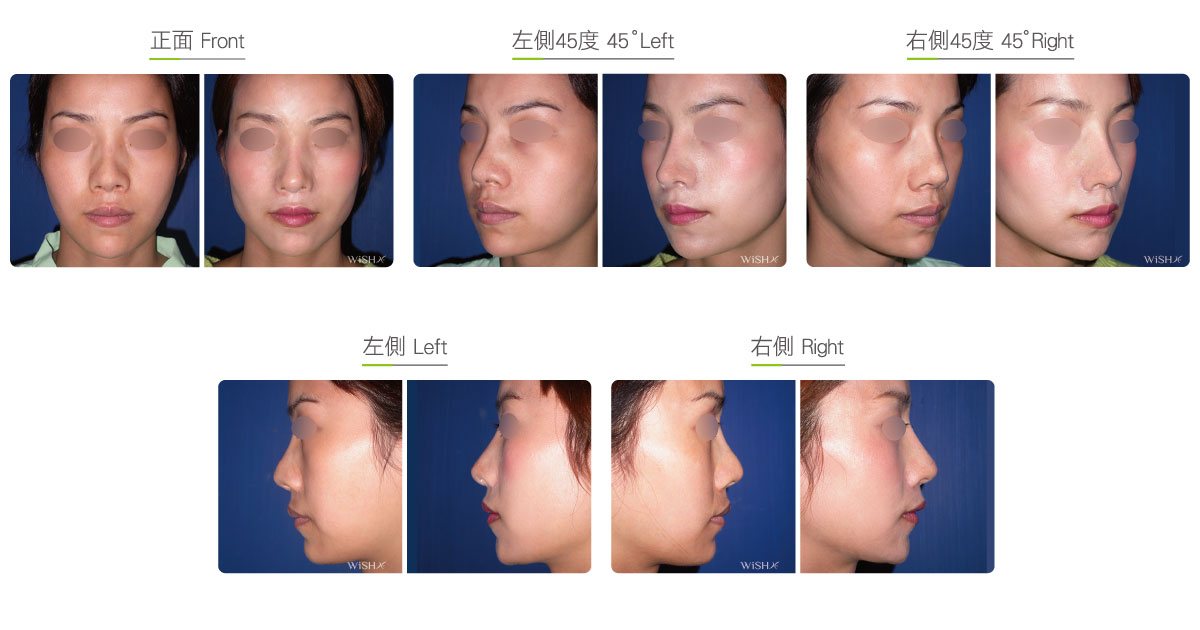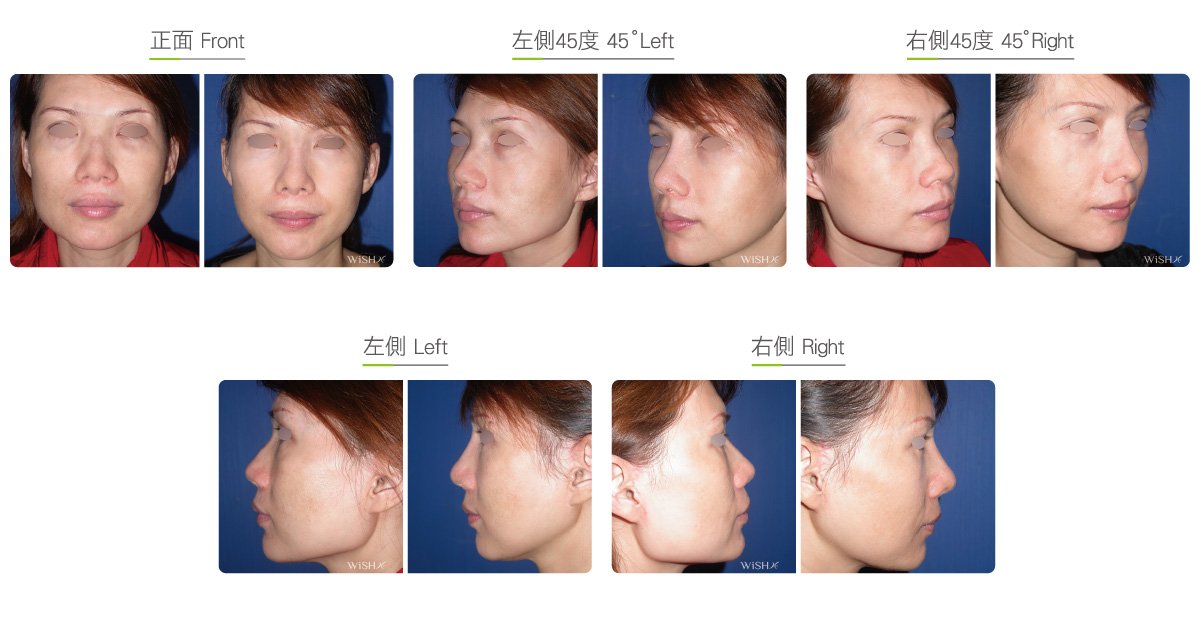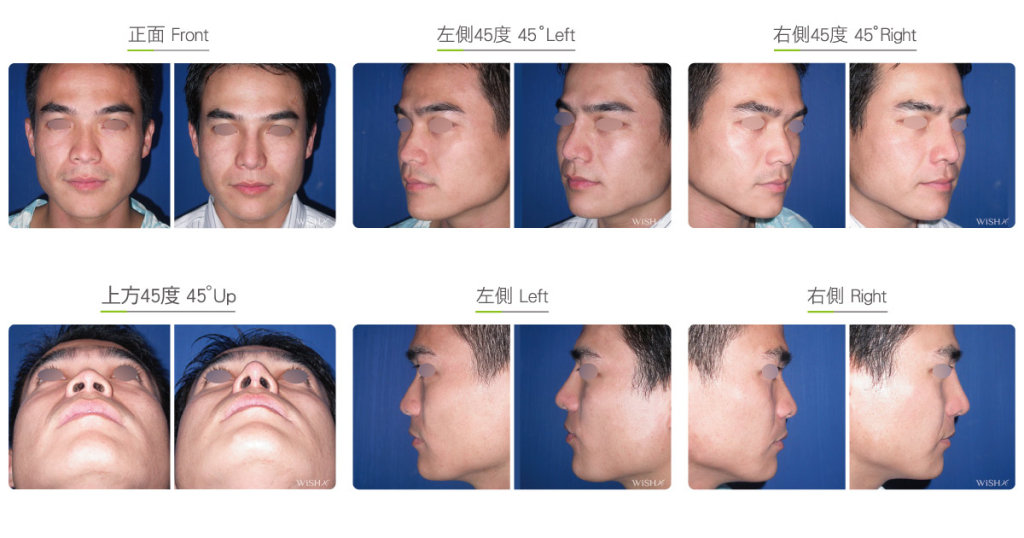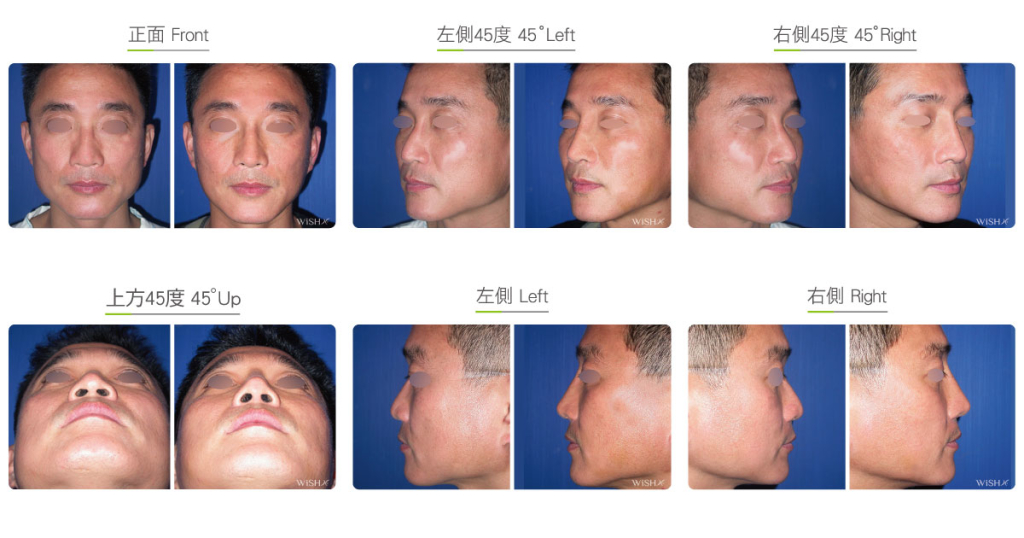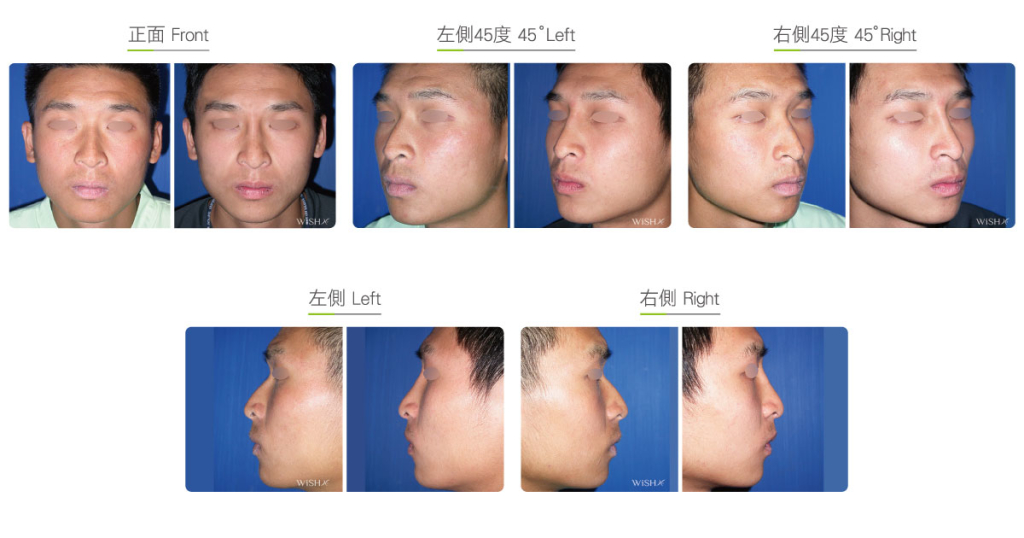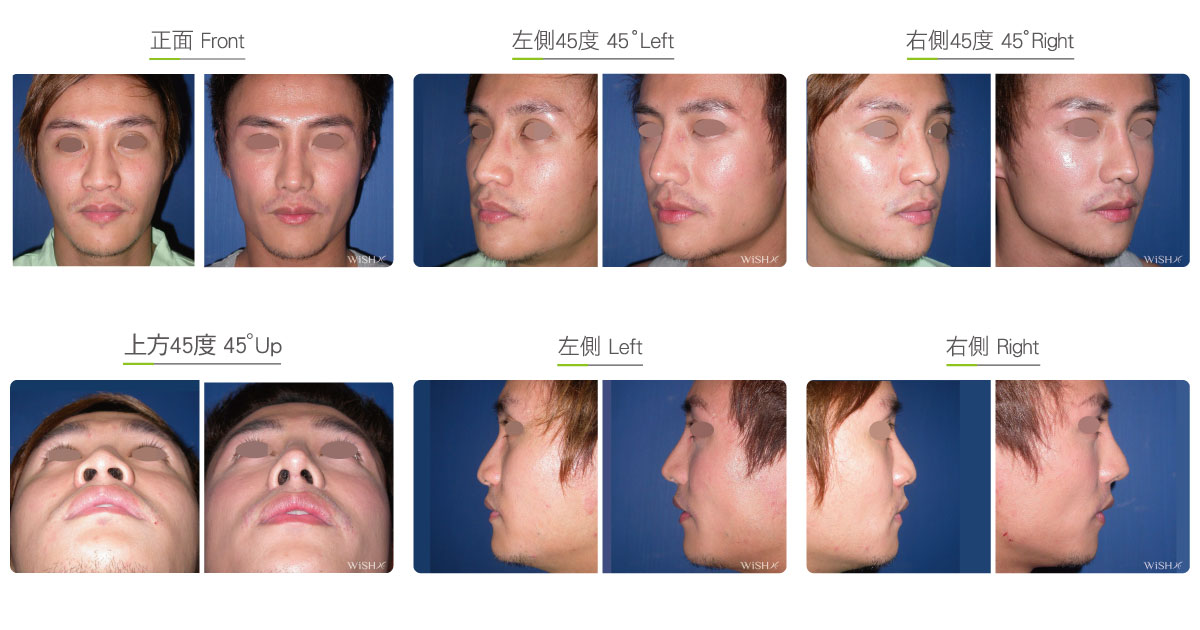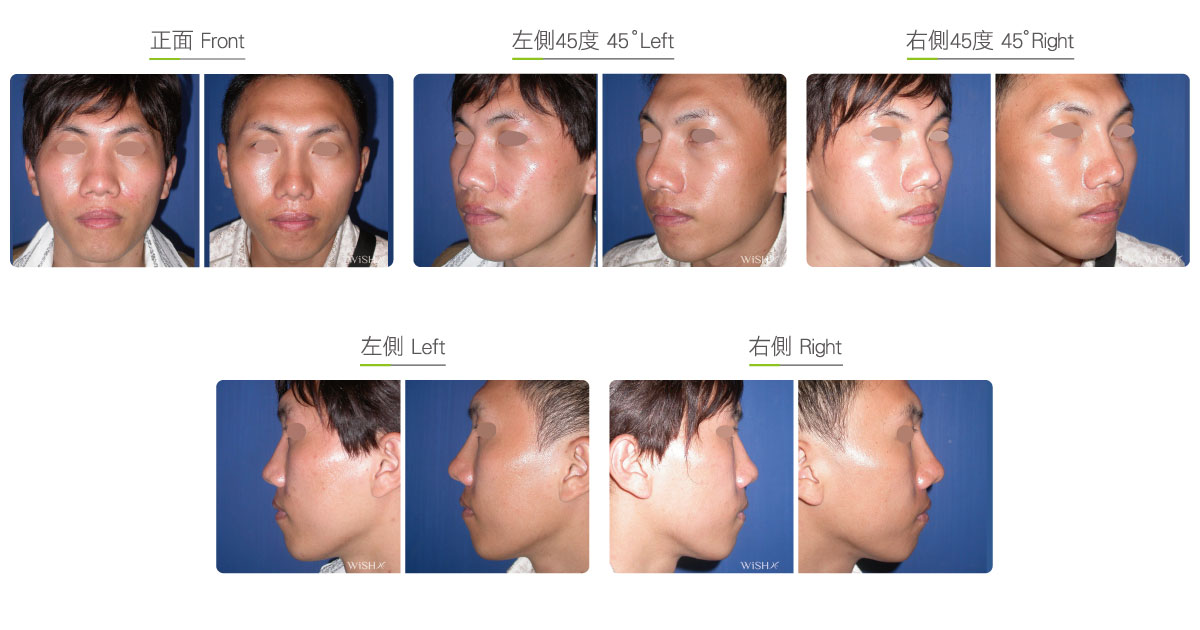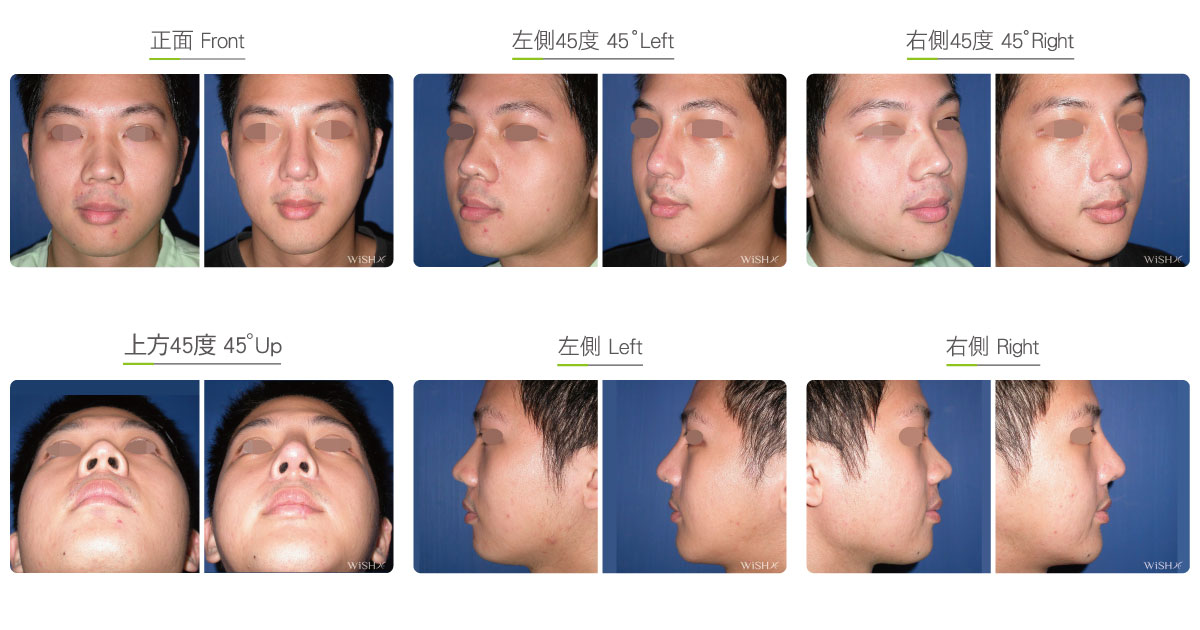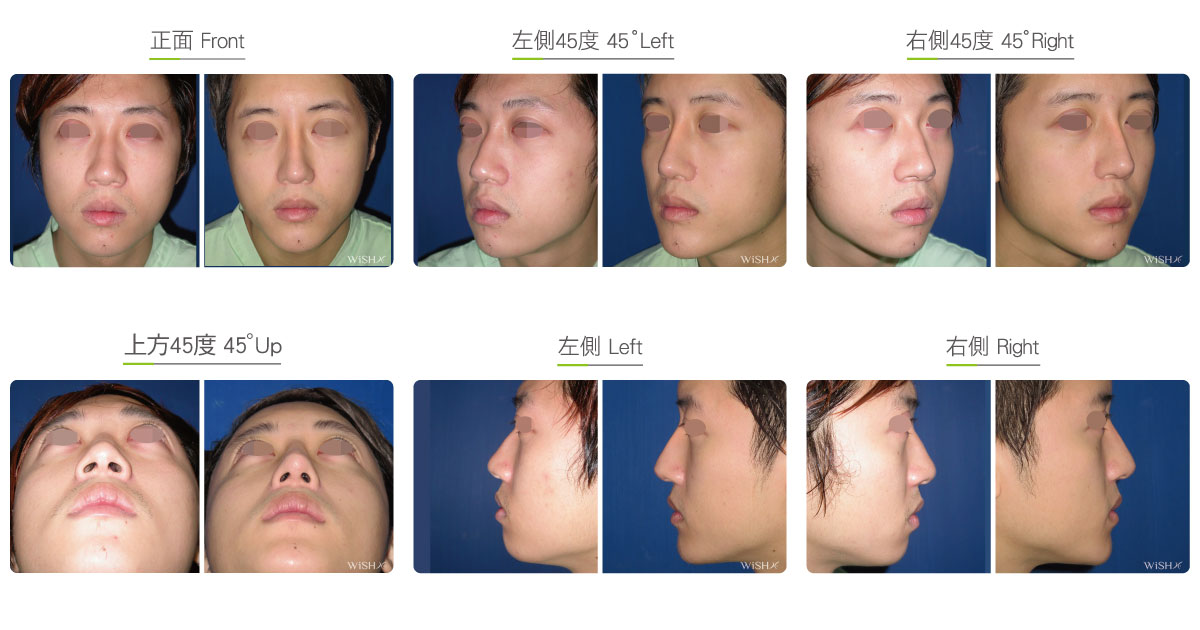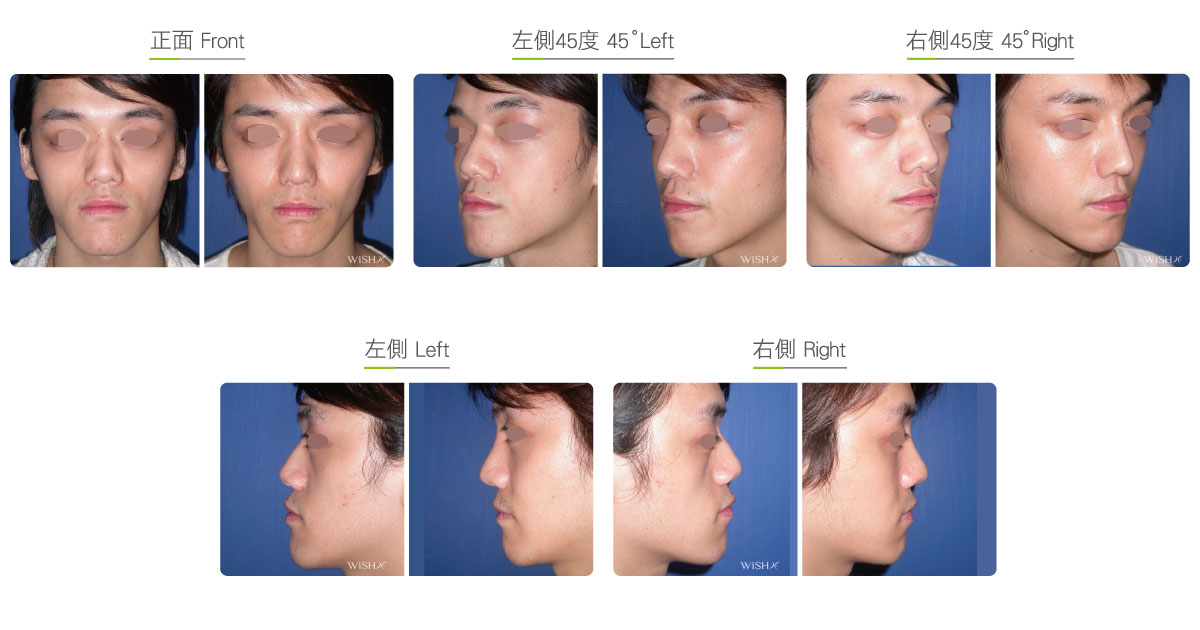Glabellar Augmentation
The area superior to the radix is called the glabella (nasion), which extends from the inner margin of the bilateral eyebrows to the horizontal line of the upper eyelid, and it is similar to a pentagon. In the lateral view, there is an indentation at the glabella before it connects with the starting point of the nasal bridge, which is called the nasofrontal angle, as a referential point of rhinoplasty, with the standard range at approximately 120–130° among Orientals. Common rhinoplasty does not intentionally augment the glabella to avoid making the nasal bridge exceedingly straight or the nasofrontal angle shallow, leading to an unnatural appearance such as a lion nose (like the nose of Namry). However, some patients may have excessive depression at the starting point or radix of the nasal bridge, with the nasofrontal angle less than 110°, and even a saucer-shaped depression at the glabella till the forehead, which undermines the smooth connection between the nasal bridge prosthesis and glabella or the naturalness of the radix after rhinoplasty or even limits the selection of the size and height of nasal implants. Therefore, the height of the glabella is also adjusted along with open (Korean-style) rhinoplasty, which is also called three-section rhinoplasty. Surgical conditions comprise the augmentation of the glabella (radix) with a flaky Gore-Tex or auricular cartilage, augmenting the nasal bridge with artificial nasal implants and sculpting the nose with an autologous nasal septal or auricular cartilage.
Similar to the common open rhinoplasty, glabellar augmentation is conducted via an incision at the nasal columella and emplacing the Gore-Tex at the glabella before other rhinoplasty procedures. If the patient only needs glabellar augmentation without rhinoplasty, the direct emplacement of Gore-Tex via a 0.5-cm incision at the inner margin of the bilateral eyebrows is also considered. In addition to surgical intervention, a non-surgical method is employed to augment the glabella, such as the injection of autologous fat or hyaluronic acid and even long-acting Aquamid, which obtains the similar results as surgery.
Surgical conditions
Duration
- Type of anesthesia: IV sedation + local anesthesia
- Surgical incision: Inside the bilateral nostrils and at the bottom of the nasal columella or at the inner margin of both eyebrows
- Recovery: 3–5 days
- Removal of stitches: 7 days
General instructions
No food and water on the day of surgery
- Do not smoke for 1 week on the day of operation.
- Wear a tape or plaster splint for 1 week postoperatively to stabilize the nasal bridge.
- Avoid smoking and alcohol and impacts to the nasal tip for 3 months postoperatively, and clean the intranasal wound in the morning and evening every day.
- Abstain from eating raw food, seafood, and irritating food or spices for 3 months postoperatively.
- Avoid exposure of the nostrils to dirty water (sea water, swimming pool or sauna water, and hot springs) and close contact with pets and dust mites for 3 months postoperatively.
- In case of any flu symptoms after the surgery, please visit a doctor immediately.
Ideal candidates
- Patients with a great fall of the congenital nasofrontal angle, which is less than 100°
- Those with obvious depression at the radix due to an exceedingly high eyebrow ridge
- Those with deep transverse grooves at the radix prior to rhinoplasty
- Those who want to maximally heighten the nasal bridge and radix but who wish to achieve natural and smooth connection with the forehead
- Those who desire a T-shaped connection between the glabella and nasal bridge
Potential complications
- Foreign body reaction or infection of implants
- Displacement
- Nasal columellar scar
Surgical advantages
-
It is able to fill the depression at the glabella to plump up the nasion.
-
It is able to improve the depression at the connection between the nasal bridge prosthesis and glabella to avoid breakage or a transverse groove at the radix.
-
It is able to facilitate the nasal bridge prosthesis to augment the radix.
-
It is able to smooth the nasofrontal curvature and angle at the glabella and radix.
Surgical drawbacks
-
Rhinoplasty with composite materials is necessary, so there may be risks of foreign body reaction or infection.
-
Surgery may lead to vision changes due to the widening of the eye span.
-
Excess glabellar augmentation may result in a thicker radix.
-
The surgery is complex, and the recovery period is much longer.

